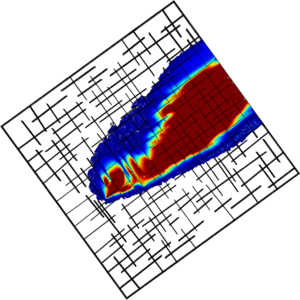Difference between revisions of "Model concepts"
(Added some dummy text to the model concepts and software) |
m (Edited headings of model concepts) |
||
| Line 1: | Line 1: | ||
| + | == Model concepts == | ||
For the modeling of flow and transport in fractured porous media, different kinds of model concepts have been developed. Here is an overview of the major groups. | For the modeling of flow and transport in fractured porous media, different kinds of model concepts have been developed. Here is an overview of the major groups. | ||
| Line 12: | Line 13: | ||
A dual-continuum model uses two or more coupled continua. One is usually the matrix and the other one the fracture continuum. Different parameters and equations are used in the continua. | A dual-continuum model uses two or more coupled continua. One is usually the matrix and the other one the fracture continuum. Different parameters and equations are used in the continua. | ||
| − | Available software | + | == Available software == |
* Comsol Multiphysics | * Comsol Multiphysics | ||
* FEFlow | * FEFlow | ||
Revision as of 13:11, 5 April 2016
Contents
Model concepts
For the modeling of flow and transport in fractured porous media, different kinds of model concepts have been developed. Here is an overview of the major groups.
Equivalent porous-medium model (EPM)
An equivalent porous-medium model (EPM) uses usually Darcy's law for the flow calculations. Fractures are not resolved in EPMs and average parameters are used (f.e. mean hydraulic conductivity, mean porosity etc.)
Discrete-fracture model (DFM)
Discrete-fracture models (DFM) discretize the (major) fractures as well as the matrix between them.
Dual-continuum model
A dual-continuum model uses two or more coupled continua. One is usually the matrix and the other one the fracture continuum. Different parameters and equations are used in the continua.
Available software
- Comsol Multiphysics
- FEFlow
- HydroGeoSphere
Back to Main Page
